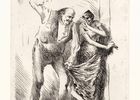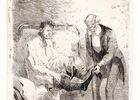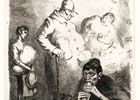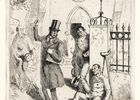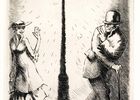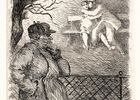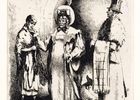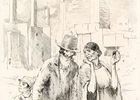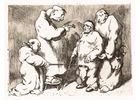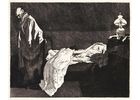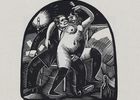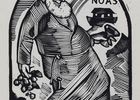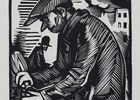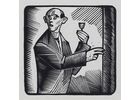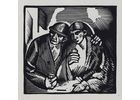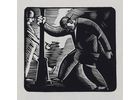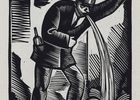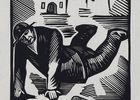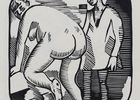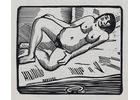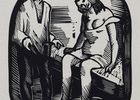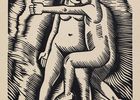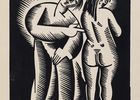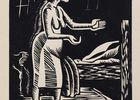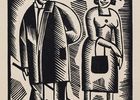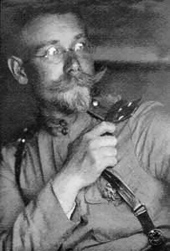
Russian
artist and author, master of prints.
He was
born in Riga into a family of General Nikolay Masiutin, received a professional
military education. In 1908–1914, he studied the technique of etching at the Moscow
School of Painting, Sculpture and Architecture under the guidance of Sergey
Ivanov, was a member of the Union of Russian Artists (from 1914), participated in exhibitions –
“Wreath” (1908), the exhibitions of the Moscow Union of Artists, (1908-1916), the
Union of Russian Artists (1910-1917), at the International Exhibition of Book
Printing and Graphic Arts in Leipzig (1914). In his art, he tended towards symbolism
with elements of grotesque, mysticism, surrealism (“Seven Deadly Sins”,
1907–1908) which earned him the nickname of a “Russian Goya”. After the First World
War, he was a member of the Commission for the Preservation of Memorials of Art
and Relics of the Past, taught the art of etching at the State Free Arts
Studios. In 1919, he turned to lithography and xylography, made a series of
woodcuts for his science-fiction novels Tsarevna
Nefret [“Princess Nefret”], Dni
tvorenyi ‘[The Days of Creation”]. Parallel to that, he worked on a series
of easel woodcuts Vino, karty i zhenschiny
[“Wine, cards, and women”].
In
1920, he emigrated and took Latvian citizenship. In 1921 he settled in Berlin where
he collaborated with several publishing houses - Gelikon, Neva, Russkoye tvorchestvo [“Russian Creative Art”] and
others, which commissioned from him illustrations to books by Pushkin,
Lermontov, Griboyedov, Gogol, Dostoyevsky, Chekhov and others. He published two
works on graphic arts – “Engraving and Lithography. Manual”, “A Study in
Characterising the Skill of Engraving and a Critical Review of Works by Thomas
Buick” (both in Berlin, 1922) and a few novels. In 1923, a new edition of the
“Seven Deadly Sins” series of etchings appeared. In Germany, apart from working
in book design, he drew trademarks, labels, theatre posters and advertising
posters. He designed for Mikhail Chekov’s company performances Dvorets probuzhdaetsia [“The Palace is
Awakening”] based on Russian fairy tales (Paris, 1931), Twelfth Night, and Don
Quixote. In the 1930-1940s, he designed scenes for “UFA”, the Italian-German
motion pictures company.

